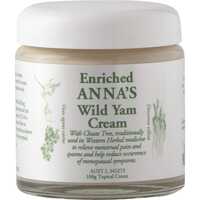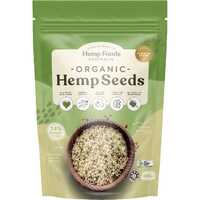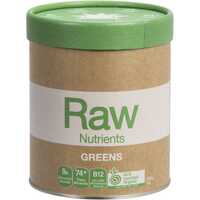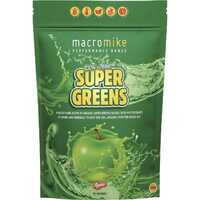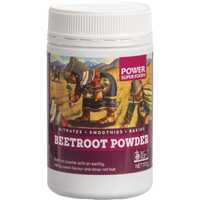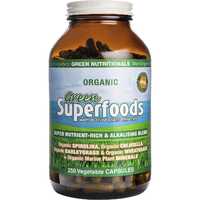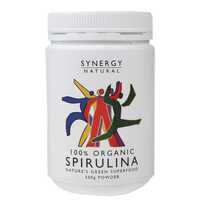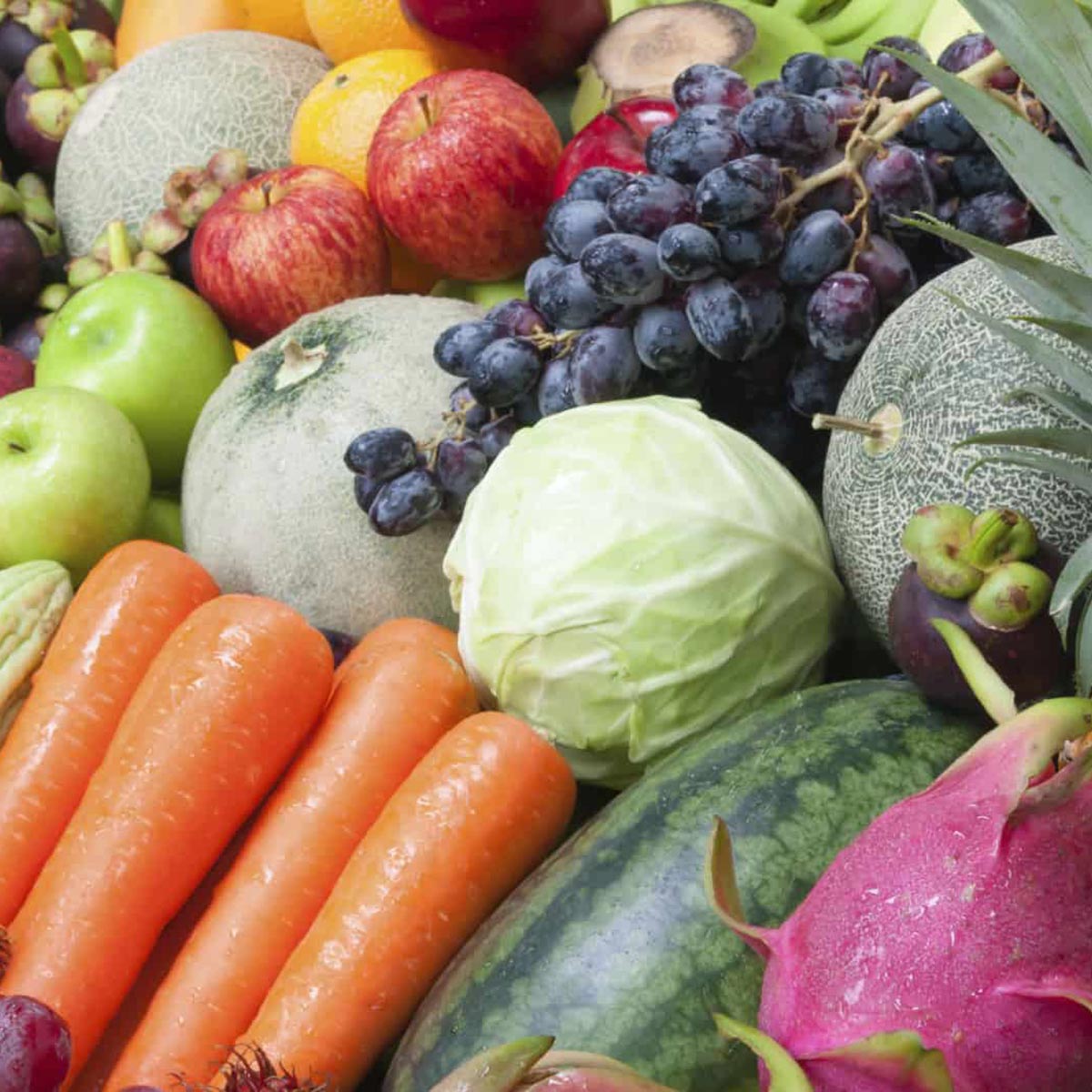Food is available in many colours, from bland whites and browns to bright greens, reds, and purples. Paying attention to colour is essential when you buy and prepare food, with some hues linked with specific tastes, aromas, and nutrients. Much more than looking good, a colourful palette can help you to live a long and healthy life. While artificial colours are often added to commercial food products to influence purchase decisions, the natural world is packed with bright and beneficial colour options.
From fruits and vegetables to nutrient-rich superfood products, let's take a deep dive into the wonderful world of food colour. We'll review natural and artificial colours, look at phytonutrients, and review the five colour groups of fruits and vegetables.
Nutritional Impact of Colour
The foods you eat help to keep you alive and kicking. They give you energy for daily activities, keep your immune system working, and allow you to maintain all the functions of your body. From breathing and moving to digestion and repair, the nutrients in food are vital to every aspect of life. Human beings need to eat a wide variety of foods to stay healthy, and along with food type and quality, colour plays an important role.
In Australia, we are advised to eat fruits and vegetables of many colours to ensure a balanced diet. Along with being fun, shopping and cooking by colour are effective ways to regulate this diet. While you don't need to consume every colour in every meal, eating a fruit and vegetable rainbow is a great way to maximise your nutrient intake. Natural food colouring is based on phytonutrients, with these influential compounds also giving plants their many tastes and aromas.
What are Phytonutrients?
Also known as phytochemicals, phytonutrients are what give fruits and vegetables their vibrancy. These natural chemical compounds also have other roles, many of which are linked to protection. They help plants to resist fungi, bacteria, and viruses, and they also provide defence against insects and UV radiation. When they're eaten whole or extracted from plants, benefits are also available to humans. From nutrition and medicine to food processing, phytochemicals have a range of diverse applications.
The phytonutrients in food help to protect human beings from certain diseases. Some of these compounds have anti-cancer and anti-heart disease effects, and others provide protection from cardiovascular disease and other conditions. Researchers are also working with phytochemicals in relation to liver disease prevention. The pathogenesis of liver disease can be extremely complex to diagnose and treat, and abundant phytochemicals called polyphenols are proposed to supplement existing treatment options.
Depending on the food and how it's prepared, eating a rainbow of coloured fruits and vegetables is a great way to stay healthy. While phytonutrients are not considered to be essential for life in the same way as protein, carbohydrates, fats, vitamins, and minerals, they offer a variety of antioxidant and anti-inflammatory benefits. They help to detoxify carcinogens, improve immunity, enhance communication between cells, repair DNA damage, and alter estrogen metabolism. Consuming a colourful phytonutrient-rich diet seems to be an effective strategy for reducing numerous disease risks.
There are more than 25,000 types of phytonutrients, including these six vital groups:
- Lignans are found in kale, broccoli, apricots, strawberries, flaxseeds, sesame seeds, poppy seeds, and rye.
- Resveratrol is found in red wine, along with grape juice, cocoa, peanuts, blueberries, and cranberries.
- Carotenoids are found in carrots, sweet potatoes, papaya, mangoes, spinach, kale, bell peppers, tomatoes, and oranges.
- Curcumin is found primarily in turmeric, which is a member of the ginger family.
- Ellagic acid is found in grapes, pomegranates, walnuts, raspberries, strawberries, blackberries, and cranberries.
- Flavonoids exist in many foods, including apples, onions, coffee, tea, berries, chocolate, kale, leeks, and ginger.
The Deception of Artificial Colours
Not all colours are natural, with artificial colours regularly added to commercial food products to boost sales. As a powerful sensory cue and motivational driver, food companies have learned how to leverage the intrinsic power of colour. The colours used in food processing and packaging have a strong psychological impact, and they also influence sensory thresholds for certain tastes. Food companies apply certain colours and combinations to manipulate how we interact with food products.
Added colours can be produced naturally or derived synthetically from a range of compounds. While all added colours undergo a safety assessment by Food Standards Australia New Zealand (SANZ), specific colour choices can provide a false impression of a product's freshness or nutritional profile. While natural colours are associated with specific phytonutrients, this is not always the case when it comes to artificial or added ingredients.
The Fruit and Vegetable Rainbow
When shopping for food or choosing recipes online, there are lots of important decisions to make. If you're like most people, you probably make choices based on favourite tastes and recognised flavour combinations, along with other factors like habits and finances. Shopping based on colour can also be highly effective, as long as you choose natural products and don't get tricked by processed food companies. While it's not quite a rainbow, fruits and vegetables are often separated into five distinct colour groups:
Red foods
Red foods are rich in the carotenoid lycopene, which is a beneficial antioxidant capable of cleaning up damaging free radicals. Not only do red foods taste great, but they're also relatively easy to find and look amazing when you plate up. Many common red foods are berries, including strawberries, cranberries, and raspberries. Tomatoes, apples, and cherries are also iconic red foods, with other examples including beetroot, watermelon, red grapes, red peppers, and red onions. The lycopene in these foods is known to protect against prostate cancer, heart disease, and lung disease.
Orange and yellow foods
Orange and yellow foods are rich in beta-cryptoxanthin, which is found in fruits and human blood. This common carotenoid provides lots of vitamin A, acts as an antioxidant defence, and supports cell-to-cell communication. There are quite a few orange and yellow foods on the market, with the highest levels of beta-cryptoxanthin found in tangerines, persimmons, and oranges. Other orange and yellow foods include carrots, sweet potatoes, yellow peppers, bananas, pineapple, mango, pumpkin, apricots, peaches, cantaloupe, and corn. Beta-cryptoxanthin may help to prevent heart disease.
White and brown foods
White and brown foods might not be as vibrant as other colour groups, but they do play a vital role in human health. Foods in this group include a variety of phytonutrients. The onion family is particularly beneficial as it contains allicin, an organosulfur compound with anti-tumour properties. Along with onions, leeks, and garlic, other foods in this group contain antioxidant flavonoids like quercetin and kaempferol. Despite their yellow skin, potassium-rich bananas are sometimes included in the white group. The allicin content in these foods helps to lower blood sugar, limit cholesterol levels, and reduce blood pressure, and it may also provide protection against certain cancers.
Green foods
Green foods are often equated with healthy eating, and for very good reason. Green vegetables and bright green superfoods feature a variety of beneficial chemicals, including sulforaphane, isocyanate, and indoles. These chemicals help to inhibit the action of carcinogens, which makes them a great addition to any diet. There are lots of powerful green foods on the market, including spinach, broccoli, avocados, asparagus, artichokes, kale, cabbage, and green herbs. While most green foods are vegetables, kiwi fruit and green apples are healthy exceptions. Many of the world's most popular superfoods are a vibrant green colour, including chlorella and spirulina.
Blue and purple foods
Blue and purple foods have become popular in recent years because they offer nutritional benefits in an efficient and delicious package. These colourful foods have powerful antioxidants called anthocyanins, which are water-soluble pigments belonging to the phenolic group. Anthocyanins are thought by many to delay cellular aging, and they also help to prevent the formation of blood clots. There are not that many blue and purple foods on the market, which makes them even more distinctive. Examples include blueberries, blackberries, elderberries, raisins, eggplant, plums, figs, prunes, and purple cabbage.
Final Thoughts
If you want to supercharge your diet, eating by colour is a great place to start. From vibrant salads and stir-fries to rich liquid superfoods, there are lots of ways to incorporate colour into your daily diet. If you're looking for tasty natural foods and powerful nutrient-rich supplements, Healthy Being is sure to have what you need. Order today or reach out to our customer support team for more information.


 Certified Organic
Certified Organic Vegan Friendly
Vegan Friendly  Vegetarian
Vegetarian Organic Ingredients
Organic Ingredients Dairy Free
Dairy Free Gluten Free
Gluten Free Keto Friendly
Keto Friendly

















